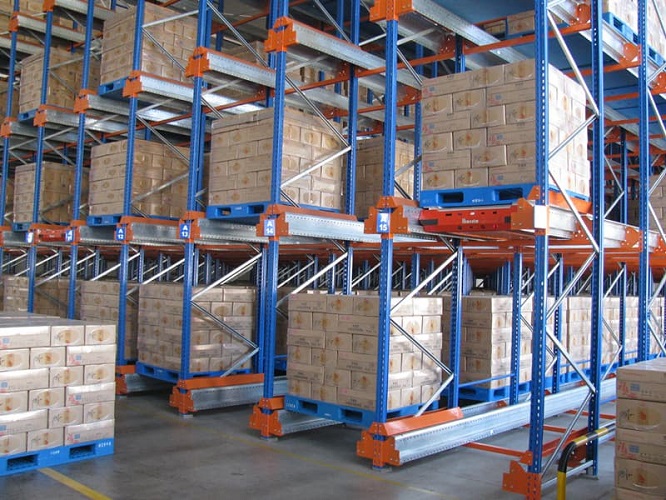The pressure on the modern warehouse is immense. E-commerce has driven consumer expectations for speed and variety, leading to an explosion in the number of Stock Keeping Units (SKUs). Simultaneously, rising land and labor costs are forcing operators to do more with less. The traditional warehouse model, reliant on wide aisles and manual forklifts, is simply no longer competitive. The only path forward is to build up, not out, and to automate the processes within.
This shift has given rise to a new generation of High-density Automated Warehouse Systems. But not all automation is created equal. The optimal solution for a 3PL handling diverse goods is different from a food manufacturer with high-volume, low-SKU products.
Choosing the right system requires a deep analysis of your inventory profile, throughput needs, and building footprint. This article will compare the industry's leading automated storage and retrieval solutions to help you identify the right fit for your operation.

Before exploring the automated equipment, we must consider the structure itself. For a "greenfield" project—a new build—the most space-efficient design is the Rack Supported Warehouse (Clad Rack).
In this design, the racking system is not just placed inside a building; the racking is the building's support structure. The roof and side cladding are attached directly to the high-bay racking.
Benefits of a Rack Supported Warehouse:
This approach creates the perfect, custom-built shell for high-density automation, but which automation is best?
The most established and recognized ASRS solution is the AS/RS Stacker Crane. This system consists of one or more fixed aisles, with a single crane operating in each. The crane, a tall mast guided by floor and top rails, moves horizontally and vertically simultaneously to access any pallet location.
This solution is the logical evolution of the manual Very Narrow Aisle (VNA) warehouse, replacing the operator-driven truck with a fully automated machine. Its primary strength is its incredible height and 100% pallet accessibility.
Let's compare it directly to a high-performance manual operation:
Operational Comparison: Manual VNA vs. AS/RS Stacker Crane
| Feature | Manual VNA Warehouse | AS/RS Stacker Crane System |
| Typical Height | 15 - 17 meters (50-56 ft) | Up to 45 meters (150 ft) |
| Aisle Width | ~1.8 meters (6 ft) | ~1.5 meters (5 ft) |
| Pallet Accessibility | 100% Selective | 100% Selective |
| Throughput (per aisle) | 15-20 pallets/hour (labor-dependent) | 25-40 pallets/hour (consistent) |
| Labor Requirement | 1 operator per truck, per shift | Supervisory (1 operator for 5-10 aisles) |
| Damage/Error Rate | Moderate to High | Extremely Low |
The AS/RS Stacker Crane is a powerful solution for operations that need to store a wide variety of SKUs in deep reserve, offering a clear return on investment through vertical space utilization and labor reduction. Its limitation, however, is throughput. An aisle is only as fast as the single crane operating within it.
To break the "one-crane-per-aisle" bottleneck, engineers developed shuttle-based systems. These solutions decouple horizontal and vertical movement, allowing multiple automated carriers to operate in a single area, dramatically increasing throughput.
For operations that prioritize raw density over individual pallet access, deep-lane systems are ideal.
Radio Shuttle Warehousing System: This is a semi-automated system where a forklift places a Radio Shuttle (a battery-powered carrier) onto a rail in a deep-storage lane. The shuttle then travels into the lane to deposit or retrieve the next available pallet. This is excellent for LIFO (Last-In, First-Out) or FIFO (First-In, First-Out) configurations but still relies on a forklift and operator to move the shuttle between lanes.
Mother Child Shuttle: This is the fully automated version. A "Mother" shuttle travels horizontally along an aisle (much like a crane), while a smaller "Child" shuttle (the Radio Shuttle) is carried on board. The Mother shuttle stops at the correct lane, and the Child shuttle detaches to travel deep into the racking.
These systems are perfect for buffers or staging areas in food & beverage or manufacturing, where large batches of the same SKU need to be stored densely.
The pinnacle of modern ASRS flexibility is the Four-Way Shuttle Racking System. This solution creates a true "cube" of storage.
Instead of being fixed to an aisle, these intelligent shuttles can travel in four directions (X and Y axes) on any level of the racking. High-speed vertical lifts or lifters are positioned at the perimeter of the racking cube to move shuttles between levels.
How it works:
A pallet arrives at an infeed conveyor.
A lift transports the pallet to the optimal storage level.
A Four-Way Pallet Shuttle picks up the pallet and travels—moving left, right, forward, and backward—to the nearest open storage position.
Retrieval is the reverse. Multiple shuttles can work together, queuing pallets at the lifts for high-speed-sequenced outfeed.
This "goods-to-person" system is revolutionary because it is both high-density and high-throughput. It can adapt to changing demands, and its throughput can be scaled simply by adding more shuttles.
There is no single "best" solution. The right choice depends on a data-driven analysis of your inventory, throughput, and physical space.
This chart illustrates the primary trade-offs between these key systems.
Here is a simple decision guide:
As warehouses evolve from cost centers into strategic assets, the automation inside them must be just as strategic. Moving beyond basic pallet racking systems to solutions like stacker cranes or intelligent shuttles is no longer a luxury; it is a competitive necessity. The key is to analyze your unique operational data to select the system that will not only solve today's storage problems but also provide the flexibility to adapt to tomorrow's demands.
Bản quyền @ 2025 Nanjing Huayide Logistics Technology Co., Ltd. Tất cả quyền được bảo lưu.
 mạng được hỗ trợ
mạng được hỗ trợ
SITEMAP / Xml / Blog / Chính sách bảo mật